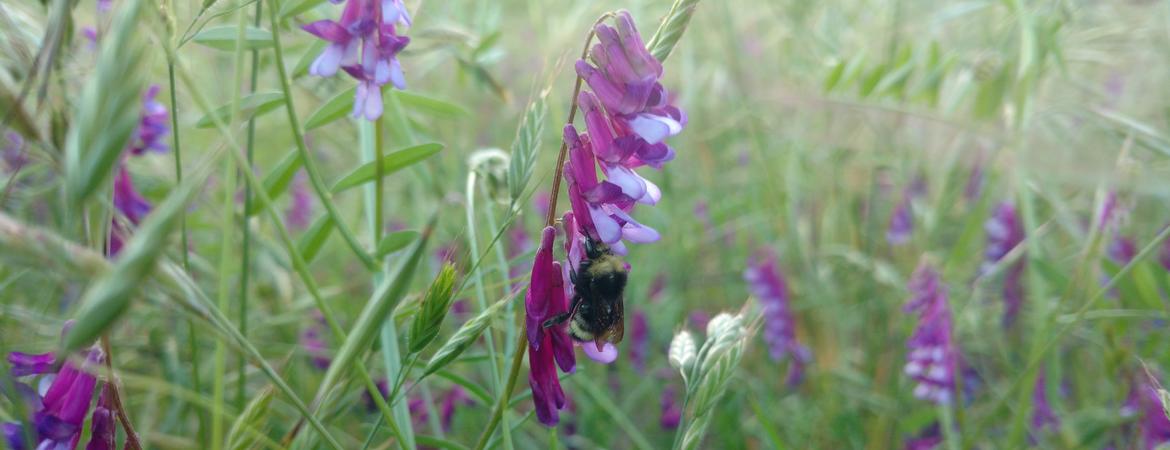
Though regional studies have tracked the decline of native bees, there hasn’t been a coordinated nationwide effort to monitor these pollinators — until now.
UC Riverside entomologist Hollis Woodard and bee researchers at 11 other institutions are leading the charge to gather the kind of data that will help governments and land managers justify new protective regulations.
“There’s been a push to do this in many of the states, and even regionally, but there’s been no effort yet to coordinate across all these efforts,” Woodard said. “Doing so will give us much better data about what conservation efforts are helping, and what we as a nation can do to improve.”
In a new Biological Conservation paper, Woodard and her colleagues lay out the need for this alliance of researchers, environmental organizations and federal entities including the U.S. Geological Survey, the U.S. Forest Service, and the Bureau of Land Management.
These reasons include the fact that wild bees contribute significantly to the success of the world’s most nutritious and economically valuable crops, their critical role in pollinating threatened plant species, and their declining health.
Supported by a $380,000 grant from the US Department of Agriculture, anyone with the time and inclination can join this first-of-its-kind monitoring network. Training opportunities will be available to help people learn how to go outside and look for bees in a standardized way.
“We are planning to give people the tools to empower them,” Woodard said.
The decline of honeybees, which are not native to the U.S., has been widely reported. However, fewer reports have focused on the health of native bees, including bumblebees, which are critical for pollinating some of our favorite foods including tomatoes, blueberries, peppers and potatoes.
However, there are more than 4,000 species of native bees in the country and conserving them isn’t just about crops. Another reason to try and halt their decline is that native bees are a critical part of our natural ecosystems, pollinating plants that other animals rely on.
“We don’t need to conserve all bees to save crops — not all of them are crop pollinators. But all of them do play a key role in the ecosystem,” Woodard said. “Remove something as essential as bees, and the whole ecosystem begins to fold like a house of cards.”
A variety of factors have been cited for the decline of native bees. One UC Riverside study demonstrated the loss of plant diversity harms some native bees at a critical stage in their development. Additional factors include pesticides and other types of environmental pollutants.
Collaborators on the new monitoring project are optimistic about the outcome.
“This national effort will provide insights into the current problem of insect decline for these pollinators that help to ensure healthy populations of wildflowers as well as our food supply,” said Rebecca Irwin of North Carolina State University and David Inouye of the University of Maryland in a statement.
Another benefit of more careful, widespread monitoring is the possibility that bee species will be discovered in new places. This occurred with a recent study in Pinnacles National Park, where researchers found 95 species not seen since 1999.
One of the challenges facing the new research alliance is tracking the bees in a systematic way across the wide variety of ecosystems found across the country, including deserts, rainforests, dry forests, tundras, and plains. Woodard, however, feels the alliance is primed to face the challenge by a shared drive to understand and assist the bees.
“It’s exciting that we’ll be capitalizing on a lot of momentum that’s been building to monitor native bees,” Woodard said. “It’s a new direction for my lab, for me, and for the country, thinking about working together and cooperating in this way.”
Visit the network’s website for more information on the project or to learn how to get involved.



